By
Julia Yale | 09/28/2018 | in
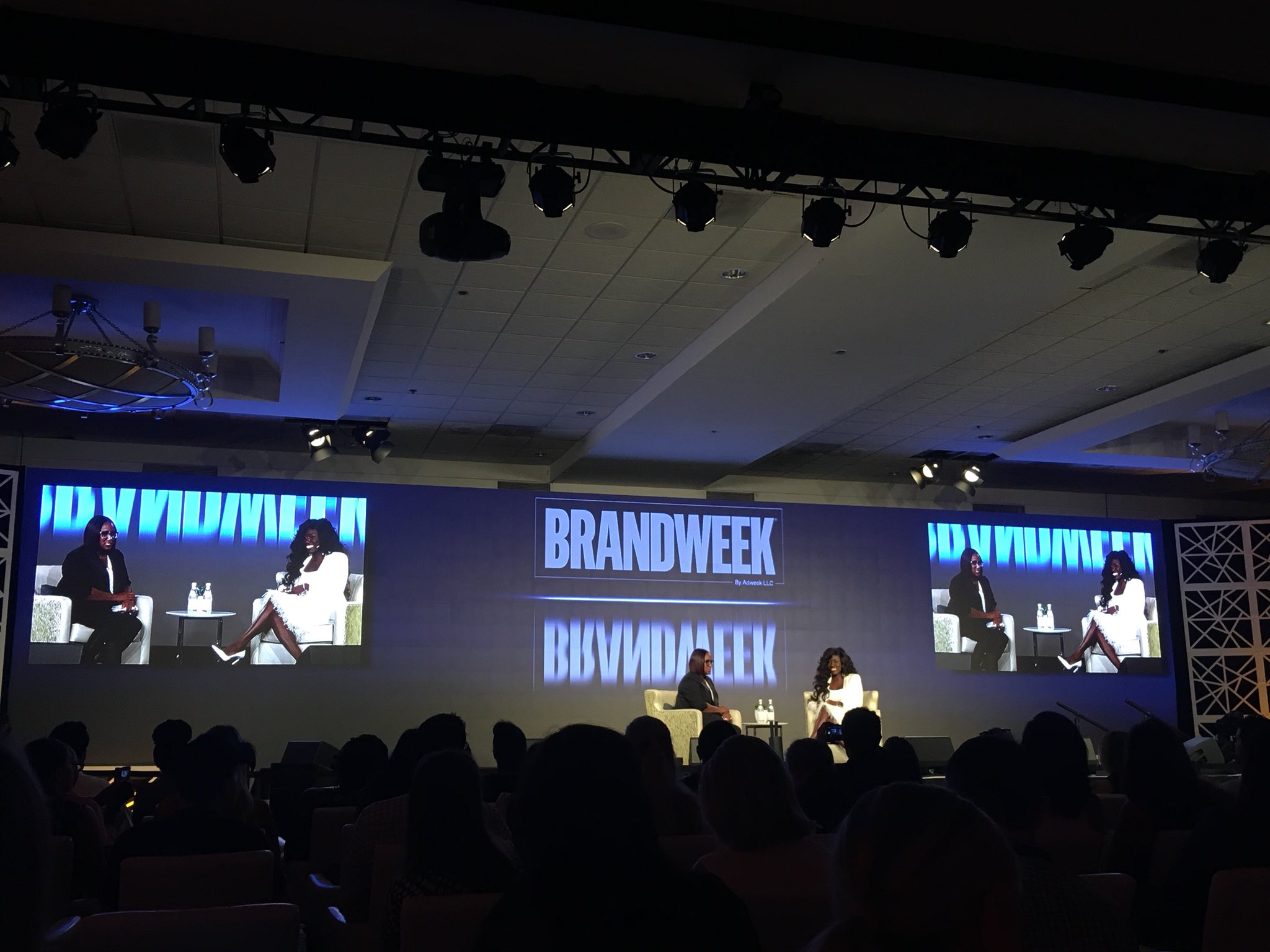
At the inaugural Brandweek conference this week in Palm Desert, CA, I learned a LOT.
I learned that marketers at big brands don’t want to be sold to, but they do want to embrace their brand’s problems — and sometimes even faults, when they are in a safe space.
I learned that the newest brands on the block, like Away, are able to be so consumer-centric, that adding in an agency wouldn’t have a bigger impact than what they’ve built internally.
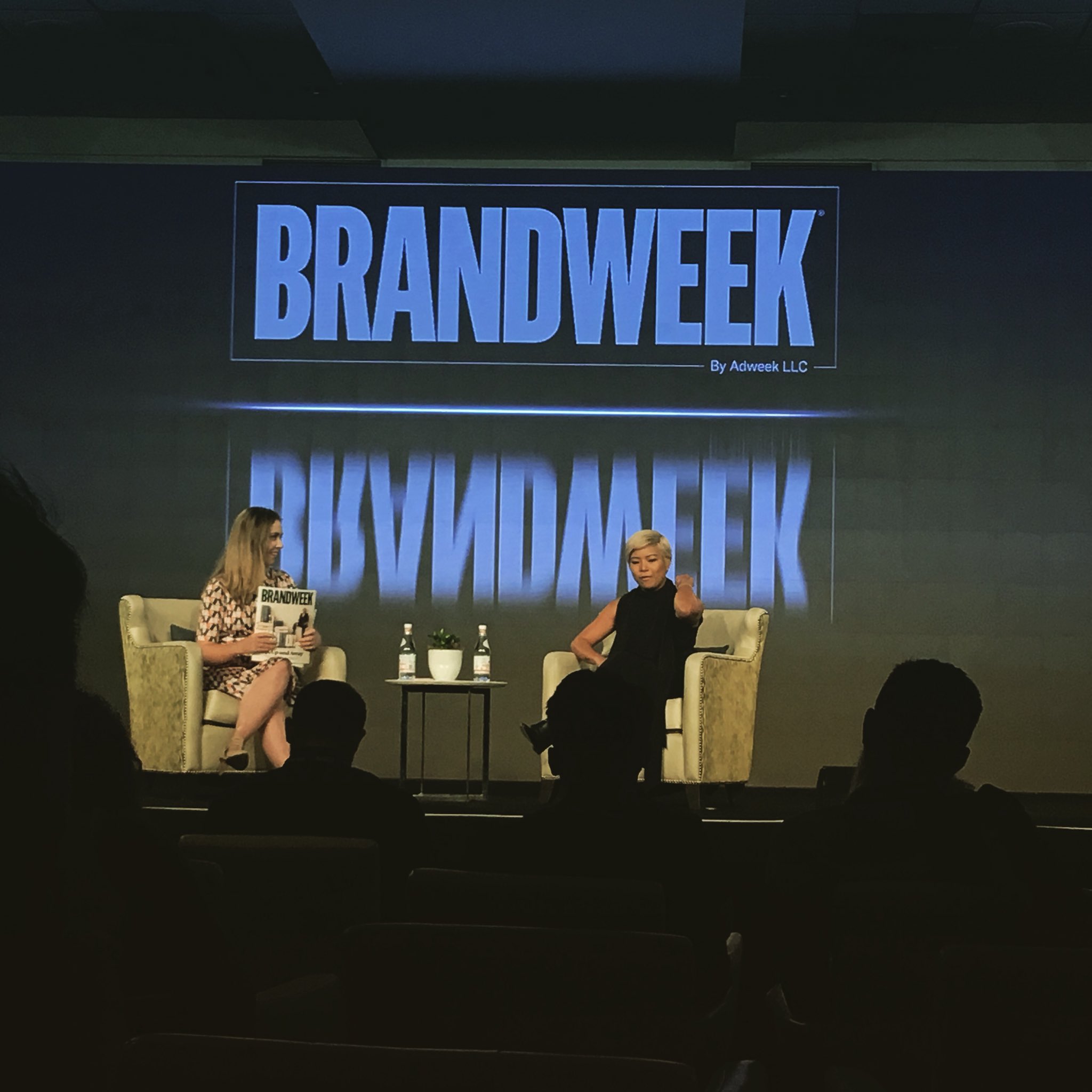
I learned that everyone who works in marketing is always going to be chasing the next ad tech and working hard — like, really hard — to explain that to anyone who will listen.
I learned that there are so many things I would have never learned if I hadn’t made the time to get out of our office and see what everyone else is talking about.
But today, I want to talk about something that all agencies need to learn. If you are an agency, and you aren’t focused on the value you provide to clients, then you are doing it wrong. If you work in an agency and you aren’t focused on the ways you can help brands better communicate, engage and interact with their consumers, the ways you can help them UNDERSTAND their consumer better, than you could take some advice from the people behind the brands that I met at Brandweek.
This was a well-attended conference. Marketers like Rick Gomez from Target, Jen Rubio from Away, Michael Dubin from Dollar Shave Club, and Leesa Eichberger from Farmers Insurance were in the audience and on the stage talking about what ground they are breaking and what problems they are facing. I even got the opportunity to sit next to Victoria Russell, the Chief Diversity Officer of Papa John’s, during a workshop. Yes, she knew about the scandals before she took the job, and yes, I believe she will be the person to turn that brand around.
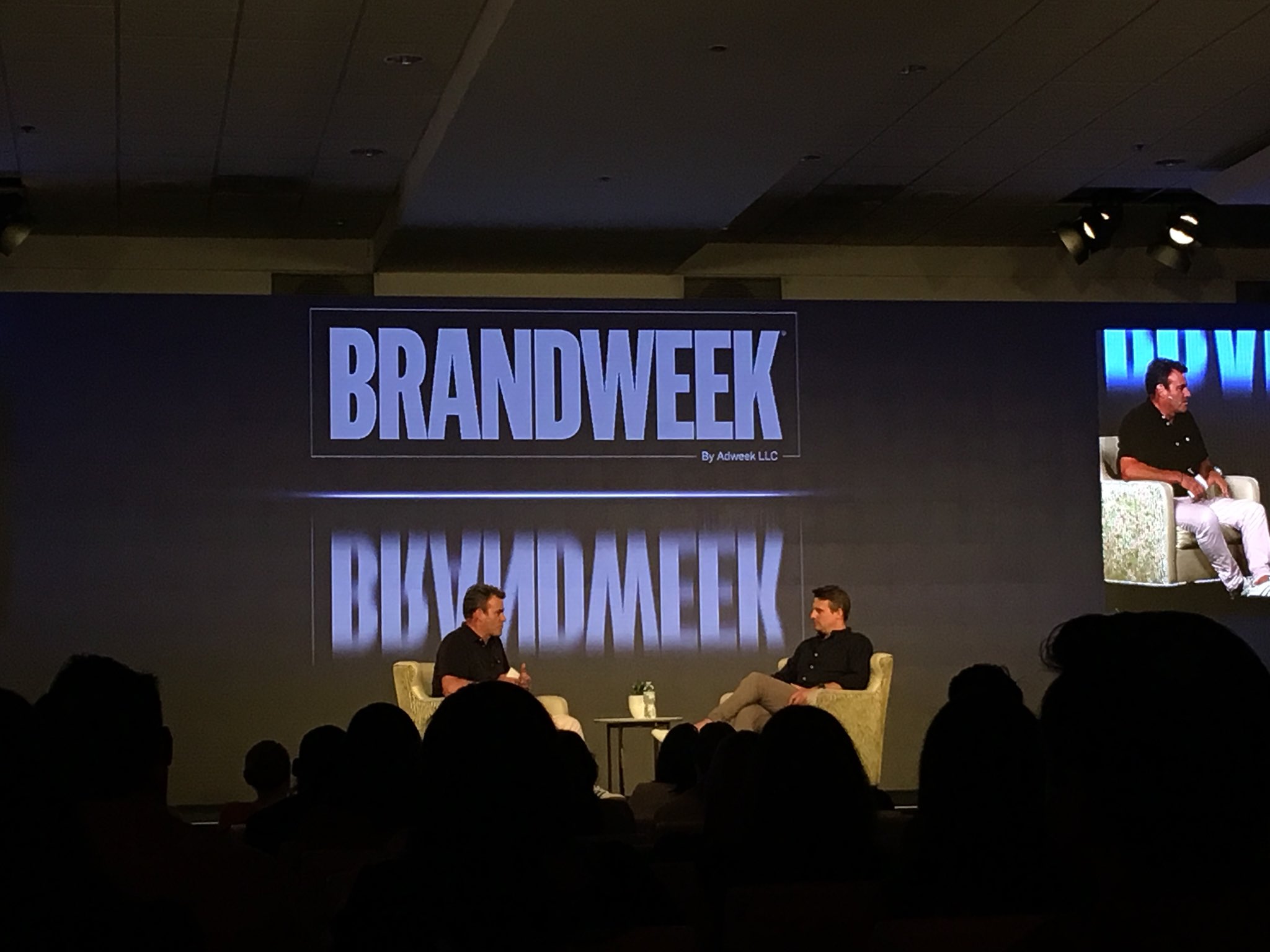
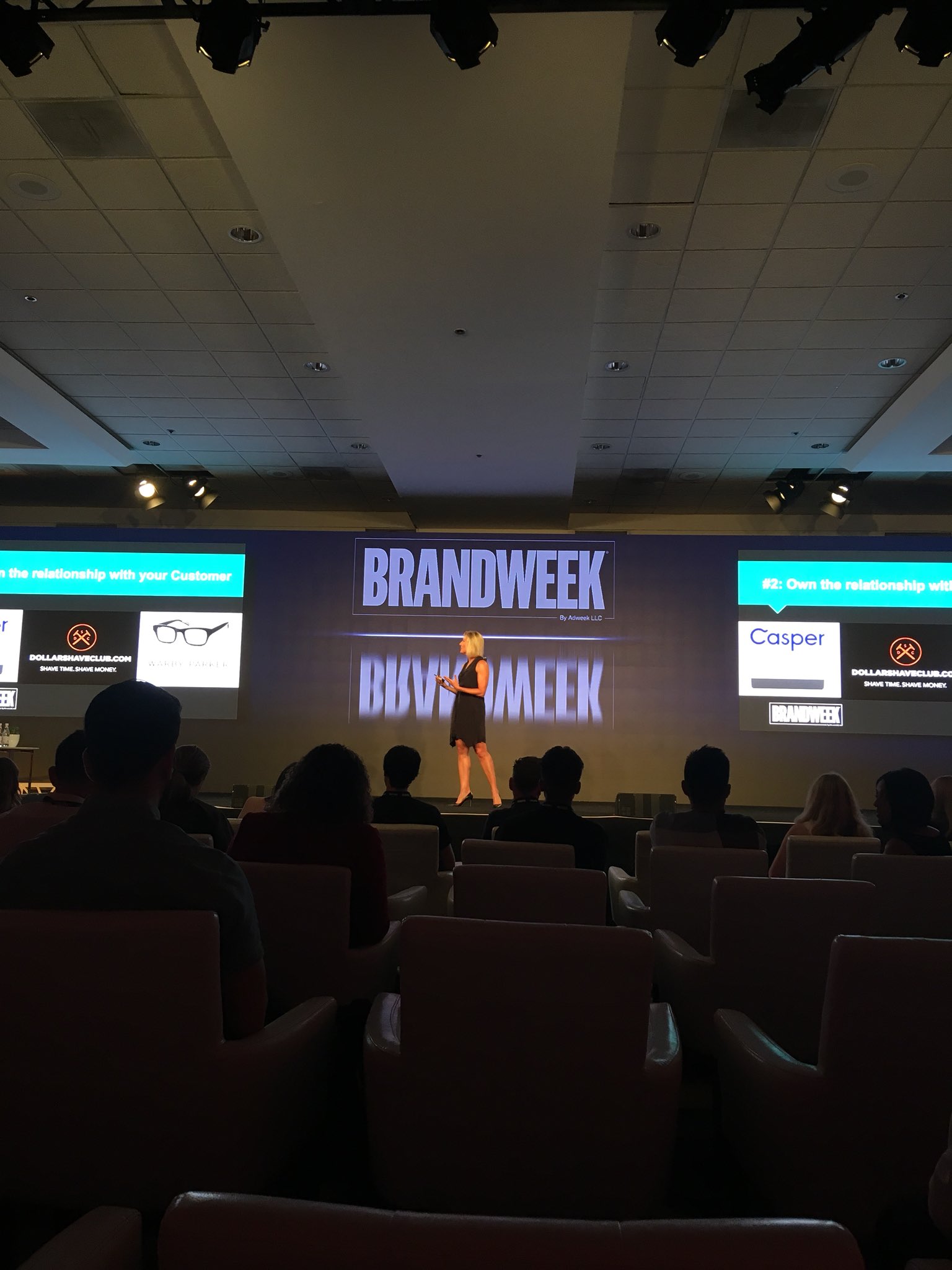
Between the varying degrees of brand awareness and brand loyalty, the thing that everyone had in common was the fact that they are all SO laser-focused on their consumer. What is their experience? How do I draw them in? How does their feedback shape my product lifecycle? How does their feedback save my business?
We got to hear about all of these issues from the marketers themselves, but even better, we got to work through them together during two different break-out workshops. People were asked to connect on issues and topics like “collaboration” and “the brand’s role in society.” They were asked to think about new media opportunities and new technology that could solve problems. And then entire rooms of people got to connect on those issues and problem-solve together.
So, what did I learn that I will take back to my team that I think will REALLY make a difference? It’s all about the consumer.
At DiGo, this isn’t a new idea. We’ve worked alongside inspiring action companies for over two decades, and each time, we’ve placed the consumer at the center of everything we do. Inspiring action companies know the importance of “learning what your devotees love about themselves with you”.
This is what we do for our clients, even when they don’t realize it. It’s our focus on this that allows us to truly act like a brand-and business-building partner to our clients. It’s what turned Weight Watchers around, and what led HelloFresh to outpace Blue Apron in the meal-kit delivery wars of 2017. It’s what re-launched Reader’s Digest, and what is behind the work we’re doing for the Partnership for a Drug-Free Kids and Salesforce.org.
It’s Inspiring Action.
By
Team DIGO | 11/09/2016 | in
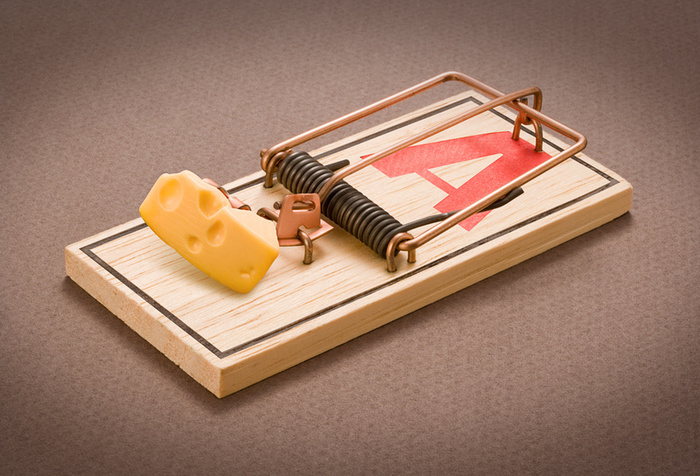
When you have a better mousetrap, you don’t hide the fact and you don’t need to dress it up. The very simplicity of your presentation becomes the ultimate proof of the superiority of your product and the confidence of your company. Only the best can be absolutely plain and direct.
- “1000 songs in your pocket.” – Apple
- “15 minutes will save you 15% on car insurance.” – Geico
- “People do stupid things, like paying too much for phone service.” – Vonage
- “A great shave for a few bucks a month.” – Dollar Shave Club
- “Rides in minutes.” – Lyft
- “Be more productive at work with less effort.” – Slack
Of course, your substance must be presented with style. Who doesn’t want to be an iPod silhouette, for example? Geico’s pragmatic punch line is always preceded by a jab of accessible humor. Vonage brings pure and stupid joy to saving money on broadband phone service. The message, however, remains the same.
Do you have a better mousetrap? Then fight like hell to present it simply.
By
Team DIGO | 09/09/2016 | in
By Mark DiMassimo
Unilever recently announced its purchase of Dollar Shave Club for a cool billion dollars in cash, and now our mobile devices are buzzing with prospective clients beseeching us…
“Dollar Shave Club Us, Please!
Well, I’m not one to say, “I told you so!” But, I’m going to make an exception this time.
I’ve been talking up Dollar Shave Club for the past four years. In the beginning, when the company’s launch video went viral, people thought I made a lot of sense. Six months later, they thought I had fallen behind the times, and within a year many suspected I had developed a troubling obsession with a quirky little mail order outfit.
But, I kept at it. I wrote a case study on Dollar Shave Club, showing how the company had perfectly executed all the Ten Signs of an Inspiring Action Company.
I interviewed Dollar Shave Club’s creative director, Alec Brownstein, for my Inspiring Action podcast.
I wrote about the company in at least six different blog posts and posted about them frequently on social networks, imploring marketers to learn what Dollar Shave Club exemplified: how to drive up brand value while driving down cost-per-acquisition.
Why the passion? Here’s why:
1) Dollar Shave Club showed us how a tiny company with a social-led brand response acquisition strategy can take share from giants. (Proctor & Gamble’s market cap is something like $232 billion!)
2) Dollar Shave Club showed us that the direct economy is taking over, and the billion dollar purchase shows us that the Unilevers of this world know it too.
The Wall Street Journal said, “Dollar Shave Club’s direct-to-consumer model gives Unilever unique consumer data and insights, according to the Wall Street Journal.”
According to Bloomberg, Unilever and P&G are masters at traditional marketing, mostly offline, but they struggle with the direct-to-consumer brand-building at which upstarts like Dollar Shave Club excel.
“These startups conduct authentic-seeming conversations with customers over social media, while the consumer products conglomerates take to Twitter and Facebook mostly to address customer complaints,” said Ryan Darnell, a principal at Basset Investment Group, which invests in such e-commerce startups as luggage seller Raden.
3) Dollar Shave Club showed us that the ultimate role of social-led, mobile-driven marketing is to drive down overall cost-per-acquisition while driving up brand value. They weren’t free media purists. They bought TV commercials and other paid media, and they optimized the efficiency and impact of the mix.
4) Dollar Shave Club showed us where the jobs are going, and what the modern definition of lean is. According to the New York Times story, $1 Billion for Dollar Shave Club: Why Every Company Should Worry, “The deal anecdotally shows that no company is safe from the creative destruction brought by technological change. The very nature of a company is fundamentally changing, becoming smaller and leaner with far fewer employees.”
5) Dollar Shave Club built a real brand because they thought of brand in the largest sense – Big Brand — not just as logos and standards, but as the entire customer and market experience. According to Bloomberg, “The key to Dollar Shave Club’s appeal is not so much its online prowess but the fact that it built a powerful brand in four years.”
6) Dollar Shave Club exemplifies the Ten Signs of an Inspiring Action Company, which mark brands that tend to outperform in driving sales growth and brand value. The company knew what it was against – ridiculously high priced grooming products for men, starting with shaving. It knew what it was for – affordable grooming you could brag about. Dollar Shave Club’s leaders knew what their target aspired to be and do – well-groomed and smart, not cheap and face-nicked. And they knew their devotees loved being members of a cool club with lots of well-designed visual signs of their membership.


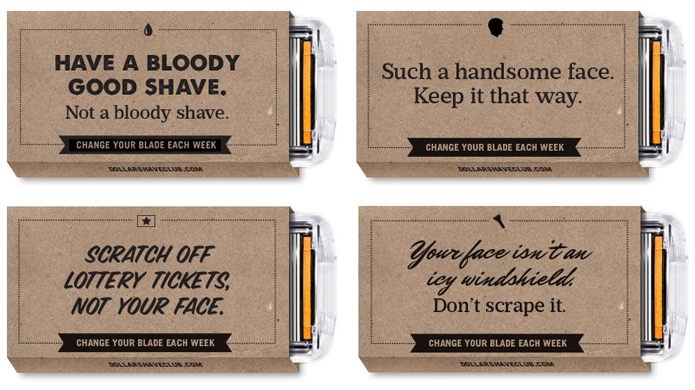
7) Dollar Shave Club used technology and system to shorten the cycle of test and optimization and to speed growth. The New York Times showed how small the company was able to remain by leveraging technology to the fullest, contrasting Dollar Shave Club to the giants that are shedding jobs by the thousands, searching for “efficiencies.”
8) Finally, Dollar Shave Club dramatized their brilliant brand idea with a few iconic actions that got us all talking, sharing and working on promoting the company for free! First, of course, was their brilliant viral video. But notice something about it that is absolutely key – it isn’t just a quirky “viral” video, but it’s also a fully functioning hard-hitting brand response television commercial as well! Later, it would run on television as well. Internet cool? Check. Hard-working sales generator? Check!! Stretches the media budget? Check!!! Generates lots of free media mentions, social shares and word-of-mouth? Check!!!!
The next action that got us all talking was when they started advertising on television – becoming one of the very few “e-commerce” start-ups to do so, and said that their ultimate goal was for HALF of their media to be paid and for half of their media to be earned!
The next thing they did was launch moisturized wipes with an equally funny video that also made the rounds.
And, finally, the sale to Unilever for that iconic number – a billion dollars, in cash no less!
Dollar Shave Club Us, Please! We suppose we’re not the only agency that is receiving that request these days, but we may be the only one that is 100% delighted. Because the main reason I’ve been writing, talking, podcasting and preaching about Dollar Shave Club these past four years is because this is exactly what we do for the excellent, disruptive, direct model, brand response, inspiring action marketers whom we are proud to call our clients.
If you too want to drive brand value up while driving cost-of-sales down, let’s talk.
By
Team DIGO | 09/09/2016 | in
By Mark DiMassimo
Unilever recently announced its purchase of Dollar Shave Club for a cool billion dollars in cash, and now our mobile devices are buzzing with prospective clients beseeching us…
“Dollar Shave Club Us, Please!
Well, I’m not one to say, “I told you so!” But, I’m going to make an exception this time.
I’ve been talking up Dollar Shave Club for the past four years. In the beginning, when the company’s launch video went viral, people thought I made a lot of sense. Six months later, they thought I had fallen behind the times, and within a year many suspected I had developed a troubling obsession with a quirky little mail order outfit.
But, I kept at it. I wrote a case study on Dollar Shave Club, showing how the company had perfectly executed all the Ten Signs of an Inspiring Action Company.
I interviewed Dollar Shave Club’s creative director, Alec Brownstein, for my Inspiring Action podcast.
I wrote about the company in at least six different blog posts and posted about them frequently on social networks, imploring marketers to learn what Dollar Shave Club exemplified: how to drive up brand value while driving down cost-per-acquisition.
Why the passion? Here’s why:
1) Dollar Shave Club showed us how a tiny company with a social-led brand response acquisition strategy can take share from giants. (Proctor & Gamble’s market cap is something like $232 billion!)
2) Dollar Shave Club showed us that the direct economy is taking over, and the billion dollar purchase shows us that the Unilevers of this world know it too.
The Wall Street Journal said, “Dollar Shave Club’s direct-to-consumer model gives Unilever unique consumer data and insights, according to the Wall Street Journal.”
According to Bloomberg, Unilever and P&G are masters at traditional marketing, mostly offline, but they struggle with the direct-to-consumer brand-building at which upstarts like Dollar Shave Club excel.
“These startups conduct authentic-seeming conversations with customers over social media, while the consumer products conglomerates take to Twitter and Facebook mostly to address customer complaints,” said Ryan Darnell, a principal at Basset Investment Group, which invests in such e-commerce startups as luggage seller Raden.
3) Dollar Shave Club showed us that the ultimate role of social-led, mobile-driven marketing is to drive down overall cost-per-acquisition while driving up brand value. They weren’t free media purists. They bought TV commercials and other paid media, and they optimized the efficiency and impact of the mix.
4) Dollar Shave Club showed us where the jobs are going, and what the modern definition of lean is. According to the New York Times story, $1 Billion for Dollar Shave Club: Why Every Company Should Worry, “The deal anecdotally shows that no company is safe from the creative destruction brought by technological change. The very nature of a company is fundamentally changing, becoming smaller and leaner with far fewer employees.”
5) Dollar Shave Club built a real brand because they thought of brand in the largest sense – Big Brand — not just as logos and standards, but as the entire customer and market experience. According to Bloomberg, “The key to Dollar Shave Club’s appeal is not so much its online prowess but the fact that it built a powerful brand in four years.”
6) Dollar Shave Club exemplifies the Ten Signs of an Inspiring Action Company, which mark brands that tend to outperform in driving sales growth and brand value. The company knew what it was against – ridiculously high priced grooming products for men, starting with shaving. It knew what it was for – affordable grooming you could brag about. Dollar Shave Club’s leaders knew what their target aspired to be and do – well-groomed and smart, not cheap and face-nicked. And they knew their devotees loved being members of a cool club with lots of well-designed visual signs of their membership.



7) Dollar Shave Club used technology and system to shorten the cycle of test and optimization and to speed growth. The New York Times showed how small the company was able to remain by leveraging technology to the fullest, contrasting Dollar Shave Club to the giants that are shedding jobs by the thousands, searching for “efficiencies.”
8) Finally, Dollar Shave Club dramatized their brilliant brand idea with a few iconic actions that got us all talking, sharing and working on promoting the company for free! First, of course, was their brilliant viral video. But notice something about it that is absolutely key – it isn’t just a quirky “viral” video, but it’s also a fully functioning hard-hitting brand response television commercial as well! Later, it would run on television as well. Internet cool? Check. Hard-working sales generator? Check!! Stretches the media budget? Check!!! Generates lots of free media mentions, social shares and word-of-mouth? Check!!!!
The next action that got us all talking was when they started advertising on television – becoming one of the very few “e-commerce” start-ups to do so, and said that their ultimate goal was for HALF of their media to be paid and for half of their media to be earned!
The next thing they did was launch moisturized wipes with an equally funny video that also made the rounds.
And, finally, the sale to Unilever for that iconic number – a billion dollars, in cash no less!
Dollar Shave Club Us, Please! We suppose we’re not the only agency that is receiving that request these days, but we may be the only one that is 100% delighted. Because the main reason I’ve been writing, talking, podcasting and preaching about Dollar Shave Club these past four years is because this is exactly what we do for the excellent, disruptive, direct model, brand response, inspiring action marketers whom we are proud to call our clients.
If you too want to drive brand value up while driving cost-of-sales down, let’s talk.
By
Team DIGO | 08/18/2016 | in
By Mark DiMassimo
Here’s the difference between research and brand response marketing:
Research is descriptive. It works from observation of what has occurred.
Brand response marketing is creative, inventive and synergistic. Brand response marketing creates new realities.
This excellent survey looks at many hundreds of marketing campaigns run over several decades and observes that those that performed best in the short run tended to perform worst in the long run. And vice versa. While those in the middle tended to perform best on both sales and brand measures in the long run.
If you’re quite sure you’re going to still have your job in the long run, no matter what you do, then I suppose you can settle for that. You can play the averages.
But, what if you’re like most mortals? What if you actually have to have excellent short-term results in order to earn the privilege of earning excellent long-term results? What if you need to sell and build a brand?
Then, you need more than a paradox, which essentially tells you what you already know — your job is difficult and you’re going to need to achieve a result that is both uncommon and far from the center of the Bell Curve.
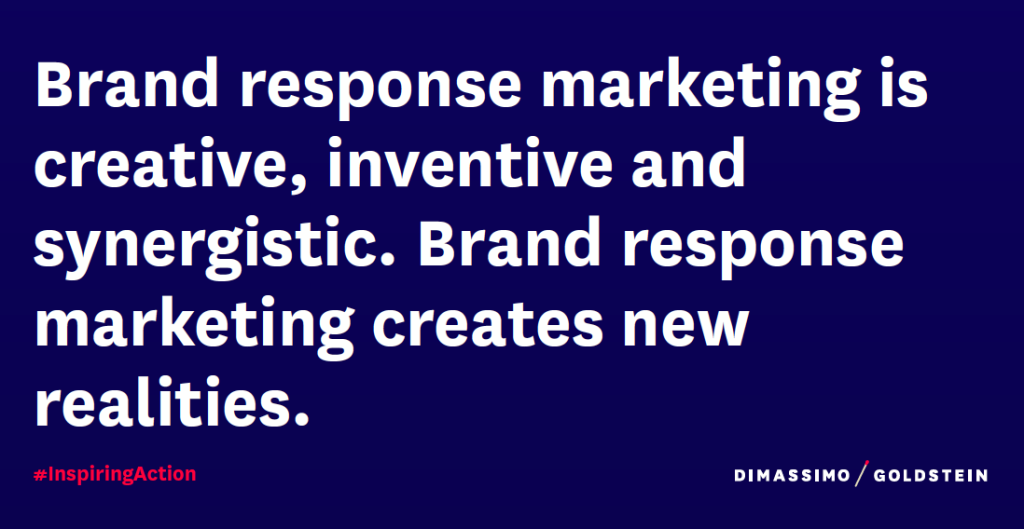
Here’s good news for you: Most of the cases considered in the survey were created by normal marketers. Many of them inadvertently sold out their brands to achieve an acceptable acquisition cost. Some of them knew it and didn’t even care.
Others built brands without a care in the world about the efficiency of their acquisition marketing. Some of these cared more about their reputation for doing famous campaigns than they did about generating results. But many more were probably guilty of nothing more than misplaced faith in the myth that building a brand can solve all problems. It can’t.
And the results of all of those marketers’ campaigns are the data behind this study. In fact, the marketers you will compete with today will be much like these.
But you don’t have to be!
Brand response is not about reducing short term response in order to build long-term brand!
Is that the way Dollar Shave Club got to a billion-dollar valuation in just a few years? Is that they way companies like American Express, at their best, build a new product? Of course not.
Because it’s possible to discover an idea that will organize and change everything An idea based on an insight. And when you know how to apply that idea to brand response creative, you’re likely to measure an extremely favorable change in your acquisition data.
The right idea is inherently brand building, even as it sells harder — and here’s the thing: If it sells harder, it runs more and more people see it. If it builds the brand, and more people see it, then it builds the brand more effectively.
The fact that this synergy is rare — about as rare as successful product introductions — doesn’t mean it is unachievable. In fact, such brand response success can be reliably and predictably achieved. All that it requires is that you have the right people on the team and that they are doing the right things.
You can have better results in the short run that naturally lead to better results in the long run.
Don’t accept any less!
For more on how to drive up brand value while you drive down cost-per-acquisition, read about The Ten Signs of An Inspiring Action Company. Inspiring action companies like Dollar Shave Club, Air BNB and Warby Parker consistently outperform their categories in building brand value and revenue.
Interested to know what Inspiring Action Marketers are obsessed with today? Find out here.
By
Team DIGO | 12/09/2015 | in

The Creative Director of the Dollar Shave Club is also the guy who made himself famous with a Google Experiment that got him a copywriter job in a top agency (budget $6). His name is Alec Brownstein, and he’s also the co-author of two best-selling comedy books, an award-winning copywriter, a film director and, yes, currently the creative director at the Dollar Shave Club. Spearheading one of the world’s fastest-growing and innovative companies, he’s quickly established himself as one of best outside-the-box thinkers in the industry.
Brownstein is also the mastermind behind the above mentioned “Google Experiment“, an inspiring example of how creative problem solving and persistence can put you in a position to succeed. The experiment gained him some overnight fame, but more importantly, it landed him a job. Listen in as Brownstein tells host Mark DiMassimo about how an unemployed International Relations graduate with zero marketing experience was able to catch the eyes of some of the industry’s most highly touted executives.
And, if you’re into laughing, you may want to order his books HERE and HERE. These books fit perfectly on a coffee table or even a bathroom, right next to your razor which you probably got from signing up to the Dollar Shave Club HERE.











